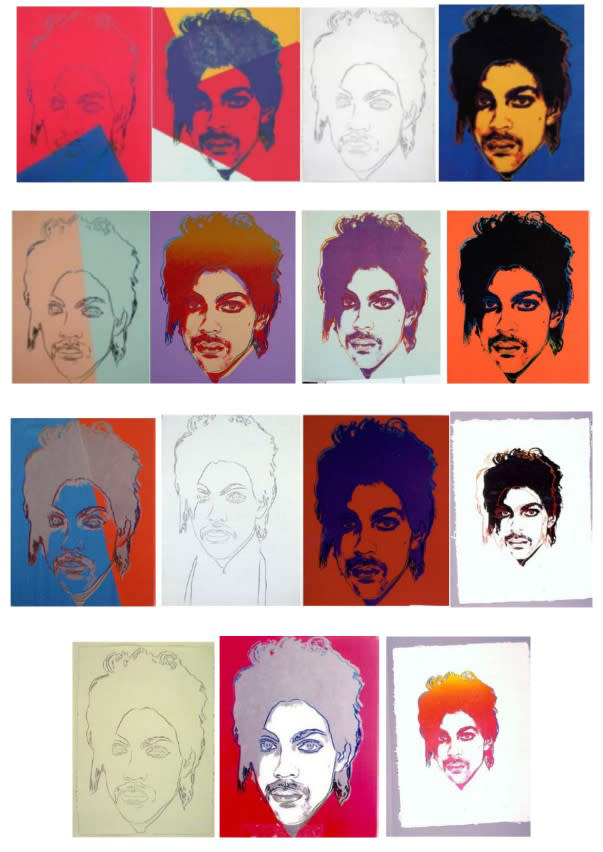Supreme Court to take up dispute over Andy Warhol images of Prince
The Supreme Court said Monday that it will referee a dispute involving pop artist Andy Warhol and a rock photographer who claimed Warhol violated her rights in creating images of Prince based on her photo.
The court will consider an issue that arises when a new work of art is based on an existing one: How different does the new work have to be to become something new, not simply an appropriation of someone else’s creation?
At the heart of the case is a picture of Prince, then a rising star, taken in 1981 by renowned photographer Lynn Goldsmith. She posed him against a white background after applying purple eyeshadow and lip gloss.
Three years later, Vanity Fair licensed the photo and asked Warhol to produce a series of 16 silkscreen prints based on it, which became a cover for an issue of the magazine. When one of the Warhol images was republished in a tribute issue, Goldsmith said it infringed her copyright, and the issue wound up in court.

A federal trial judge said Goldsmith’s copyright was not violated because the work was transformative and therefore constituted fair use. The works changed Goldsmith’s portrayal of Prince as a “vulnerable human being” and instead depicted him as an “iconic, larger-than-life figure,” the judge said.
But a federal appeals court reversed. It said the Prince series retained the essential elements of the photograph without significantly adding to or altering them. To qualify as transformative, a new work must have a “fundamentally different and new artistic purpose and character,” it said.
Warhol’s foundation said the appeals ruling was wrong to conclude that courts should not consider whether a follow-on work conveys a different meaning from the original. That conclusion “casts a cloud of legal uncertainty over an entire genre of visual art,” it said in asking the Supreme Court to take the case.
Warhol’s work “comments on the role of celebrity image in popular culture,” the foundation said, adding that allowing the appeals court ruling to stand “will chill artistic expression ... and discourage countless articles from creating new works.”
Goldsmith’s brief said Warhol’s work kept all the essential elements of the photo, including the angle of Prince’s gaze, the shadows around his eyes, and even the reflection in his eyes of her lighting equipment. His prints look different, she said, but the series was “not transformative enough.”
The question of fair use famously arose during a 2009 legal fight between The Associated Press and Shepard Fairey, the artist who created the widely reproduced “Hope” poster of Barack Obama. Fairey based it on an AP photo of Obama but argued he had altered it enough to make it fundamentally different.
AP sued, and court documents said Fairey agreed to pay the AP $1.6 million for the infringement.
The Supreme Court will hear the Warhol case in its new term, which begins in October.
